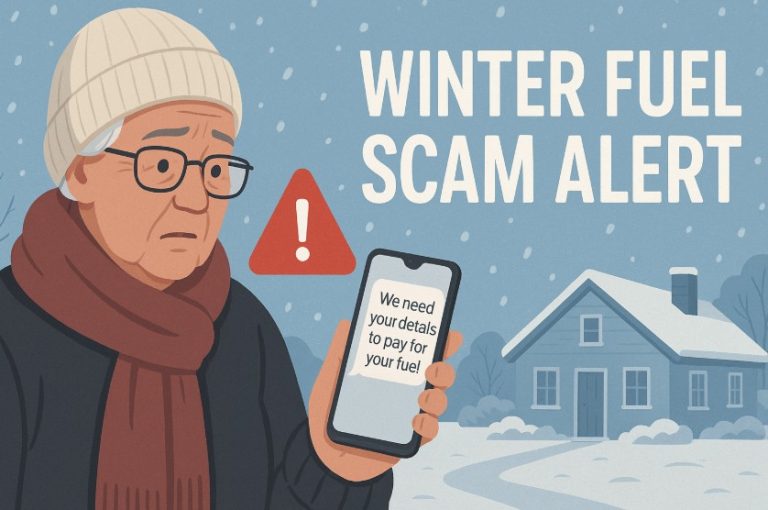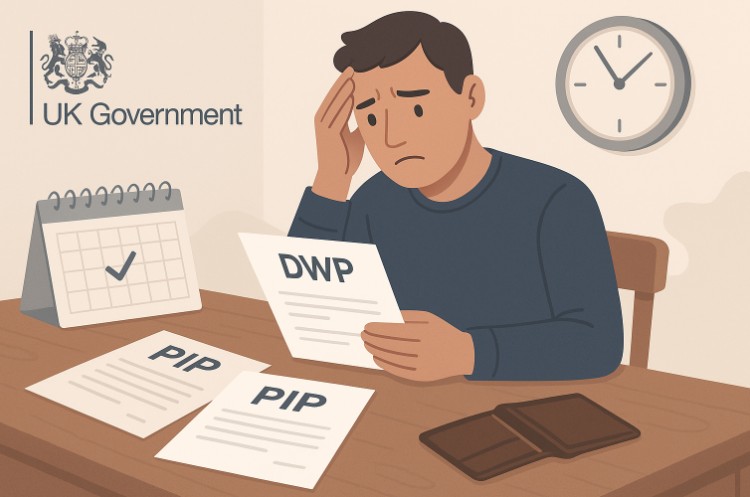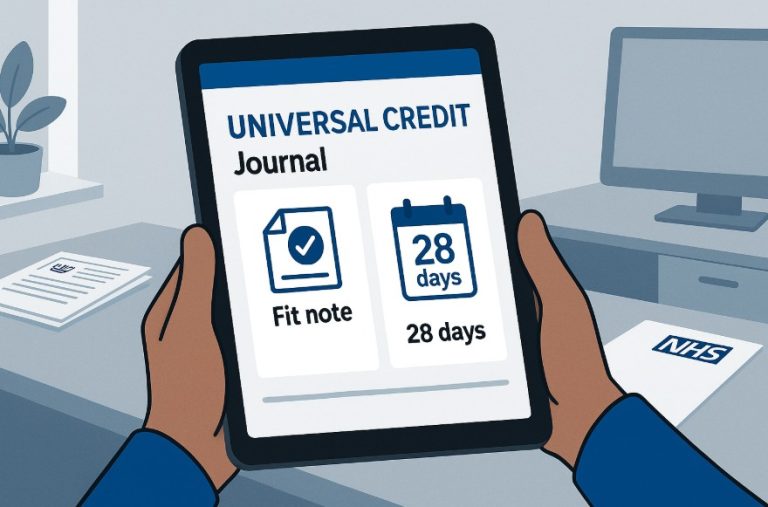The Department for Work and Pensions (DWP) has issued urgent warnings over fraudulent messages being sent to UK residents, targeting individuals with fake offers under the guise of energy bill support.
These scams aim to exploit those struggling with the cost of living by posing as legitimate government schemes. Understanding how these scams work and how to stay safe is essential for protecting personal data and financial security.
What Is The DWP Energy Grant Text Message Scam?

The DWP energy grant text message scam is a phishing attempt that falsely claims to offer financial support under the label of an “Energy Support Scheme.”
These messages are designed to appear as though they come from an official government body such as the Department for Work and Pensions. They typically contain urgent language to provoke fear or fast action and encourage recipients to click a malicious link.
Once clicked, these links may:
- Redirect users to fraudulent websites that imitate GOV.UK pages
- Request personal or financial details under the pretence of processing a grant
- Install malicious software or harvest login credentials
The aim is to deceive individuals, particularly those under financial strain, into believing they qualify for a non-existent support fund. It is important to note that no such scheme currently exists under the name “Energy Support Scheme” through the DWP.
Scammers tend to time these messages around seasonal benefit changes or energy payment adjustments, which increases their credibility. For example, pensioners were previously targeted during the rollout of the Winter Fuel Payment, which contributed to widespread confusion and vulnerability.
What Has The DWP Officially Said About The Energy Support Scheme Text Scam?
The Department for Work and Pensions (DWP) has directly addressed the issue of fraudulent messages circulating about a so-called “Energy Support Scheme.” In a post shared on their official X (formerly Twitter) account, the DWP warned the public that any such message is a scam.
The post, published on 12 July 2025, reads:
“Beware: If you get a text about an ‘Energy Support Scheme’ it is a scam.”
The message also directed the public to visit the UK government’s Stop! Think Fraud portal, where individuals can learn how to report suspicious communications and take steps to protect themselves.
This statement reinforces the department’s stance that no such scheme currently exists under that title, and it serves as a critical reminder to verify the source of any unsolicited offer of financial help. The warning was issued amid a wider campaign by the government to combat fraud and inform the public about increasing scam activity tied to energy bill support.
By publicly addressing the issue on a major social platform, the DWP aims to increase awareness, particularly among individuals who might be more susceptible to digital fraud.
How Can You Identify A Fake DWP Energy Grant Message?
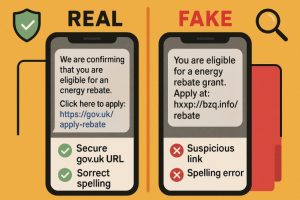
Recognising fraudulent messages is key to staying protected. Though scammers may mimic the appearance of official government communication, there are distinct warning signs.
Key indicators of scam messages include:
- Generic greetings instead of using your full name
- Suspicious or misspelled domain names
- Promises of large grants or urgent calls to action
- Requests for personal information like bank details or National Insurance numbers
Below is a table that outlines the major differences between real and fraudulent DWP communication.
| Characteristic | Genuine DWP Message | Scam Message |
| Greeting | Personalised with your name or reference | Generic terms like “Dear customer” |
| Web Address | Ends in .gov.uk | Suspicious, shortened, or non-government URLs |
| Financial Information | Never requested via text or email | Often required immediately for payment processing |
| Contact Style | Letters or secure DWP channels | Unsolicited texts or emails with urgency |
| Urgency | Rare, factual, and pre-informed | High-pressure tactics urging immediate response |
These tactics are not exclusive to text messages. Fraudulent emails and social media messages have also been used to replicate DWP branding and mislead the public.
What Official Energy Bill Support Is Available In The UK?

Despite the prevalence of scams, several verified support options exist for UK households struggling with energy costs. These schemes are government-funded or regulated and do not require any personal details to be submitted via text message.
Warm Home Discount
The Warm Home Discount is a one-off credit of £150 applied directly to energy bills for eligible customers. The eligibility criteria focus on income levels and receipt of certain benefits.
The discount is managed automatically by energy suppliers in collaboration with the government, meaning eligible individuals do not need to apply manually in most cases.
Household Support Fund
This fund is managed by local authorities and is aimed at assisting low-income households with the rising cost of living. Councils distribute the fund at their discretion and may use it to provide energy bill assistance, food vouchers, or essential goods. Applicants must apply through their local council’s official website or by contacting their local authority directly.
Supplier Support Schemes
Several major energy suppliers in the UK offer their own hardship support funds. These funds are designed to help customers in financial distress through grants or payment plans. The table below outlines key support options from leading energy providers.
| Energy Supplier | Type of Support Available | How To Apply |
| British Gas | Energy Trust Grants, debt relief | Online via British Gas Energy Trust |
| EDF Energy | Customer Support Fund, flexible payment options | EDF Energy website or customer services |
| Scottish Power | Hardship Fund, energy debt help | Apply online or via customer support |
| E.ON | Energy Fund, home efficiency advice | Online application through E.ON Fund |
| Octopus Energy | Financial Support, flexible tariffs | Contact customer support directly |
These supplier-specific schemes are intended to complement national support and typically require supporting documentation such as income statements or benefit confirmation.
How Should You Respond To A Suspicious DWP Text Message?
Responding appropriately to a suspicious message can help prevent fraud and protect others. If you receive a questionable text claiming to offer energy grants or DWP benefits, you should not engage with the message or follow its instructions.
Steps to take include:
- Forward the message to 7726, which is the UK’s spam text reporting service
- Report the scam to Action Fraud or through the Stop! Think Fraud campaign website
- Delete the message after reporting it to avoid accidental interaction
Do not share the message with others unless it is to warn them of potential fraud. If you have already clicked on the link or shared details, it is important to:
- Contact your bank immediately
- Change any passwords that may have been compromised
- Run antivirus and malware checks on your device
The government’s Stop! Think Fraud campaign provides additional guidance and resources for identifying and reporting scams, including step-by-step reporting instructions.
Why Are DWP Scams Becoming More Common?
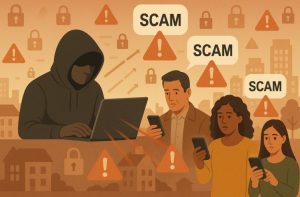
DWP scams are on the rise due to a combination of technological ease and financial uncertainty. Fraudsters can send thousands of phishing messages with little cost or risk, and the ongoing cost-of-living crisis means that many recipients are more likely to engage with offers of financial help.
Several factors contribute to the increasing prevalence of these scams:
- The wide range of benefits offered by DWP, making it an easy impersonation target
- Digital communication channels that allow scammers to mask their identity
- Public confusion over new or updated schemes such as Universal Credit, Winter Fuel Payments, or Cost of Living Payments
Scammers also take advantage of real government changes. For instance, when updates are announced to Winter Fuel Payments or cost-of-living grants, fraudsters may imitate official DWP announcements to confuse and deceive recipients.
These trends highlight the need for ongoing public education, particularly among vulnerable demographics such as pensioners and low-income families who are more likely to engage with financial support messages.
What Steps Can Help You Stay Safe From Energy Grant Scams?
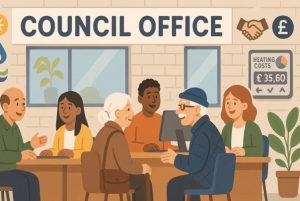
Maintaining digital safety practices is essential in avoiding scams related to energy grants. While awareness is the first line of defence, there are practical measures that every individual should follow.
Recommended safety steps include:
- Never respond to unexpected messages that request sensitive details
- Bookmark and only use official government websites like gov.uk
- Sign up for security alerts from your energy supplier or local authority
- Use secure password management tools and update passwords regularly
- Educate family members about current scams, especially those less familiar with digital technology
For extra protection, individuals should also consider enabling two-factor authentication on email accounts and installing trusted security software on their devices.
How Can Local Councils and Energy Suppliers Help With Energy Bills?
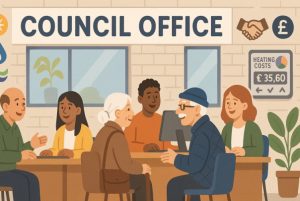
Beyond national schemes, local councils and energy providers offer targeted help.
Local Council Support
Local authorities receive funding from the Household Support Fund to help residents cover essential costs. While distribution differs by council, common forms of help include:
- Vouchers for food or fuel
- One-off cash grants
- Emergency energy top-ups
To apply, visit your local council’s website or call their customer service team.
Energy Supplier Help
Major UK energy companies operate hardship funds for customers facing payment difficulties. Support options may include:
- Grants towards unpaid bills
- Energy efficiency advice
- Payment plans with flexible terms
Contact your supplier directly or visit their website’s support section for eligibility criteria and application instructions.
Conclusion
Scammers continue to use deceptive tactics like the DWP energy grant text message to exploit vulnerable people. Although these messages may appear official, no legitimate government scheme will ask for sensitive information via text.
Staying informed, recognising warning signs, and reporting suspicious texts are critical steps toward preventing fraud. Additionally, understanding which energy support schemes are genuinely available ensures that help reaches those who need it most—safely and securely.
By spreading awareness, checking information before acting, and using trusted resources, UK residents can avoid falling victim to fraudulent energy support scams.
FAQs
What should I do if I clicked on a suspicious DWP message link?
If you clicked on a scam link, avoid entering any personal details. Run a virus scan, change your passwords, and contact your bank if financial data was shared.
Can the DWP send text messages for real?
Yes, the DWP may contact claimants by text, but they will never ask for bank details or sensitive information via SMS.
How do I know if an energy support scheme is legitimate?
Always verify schemes on official government websites like gov.uk. Avoid offers that require immediate action or ask for banking info.
Are pensioners more vulnerable to energy grant scams?
Yes, especially due to targeted scams involving Winter Fuel Payments. It’s essential to raise awareness among older adults.
Where can I find up-to-date scam warnings in the UK?
You can find current fraud alerts on websites like Action Fraud, gov.uk, or through the Stop! Think Fraud campaign.
How do I contact my local authority about energy support?
Visit your council’s official website and look under benefits or energy support sections to check eligibility and apply.
What is the difference between the Warm Home Discount and the Household Support Fund?
The Warm Home Discount is a national programme automatically applied to eligible bills, while the Household Support Fund is distributed by local councils with varying rules.

